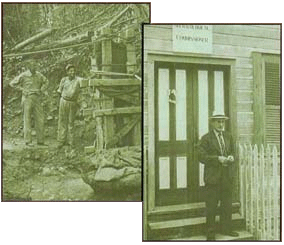
Caracol first came to the attention of the modern world only after its “rediscovery” in 1937 by Rosa Mai, a local Belizean logger searching the Vaca Plateau for commercial hardwoods such as mahogany and cedar. Mai reported the site to A. Hamilton Anderson, the first archaeological commissioner of what was then called “British Honduras.” Anderson visited the site in 1938, found almost a dozen carved stone monuments, and was impressed by what he saw. However, it was not until the 1950’s that Anderson and Linton Satterthwaite of The University Museum of the University of Pennsylvania returned to the site to carry out initial investigations. This early work recorded the visible stone monuments, made a map of the site epicenter, and undertook limited excavations around several carved monuments, in several buildings, and of several open and collapsed tombs. The monument drawings made by satterthwaite permitted the assembly of a preliminary list of the site’s rulers and documented that Caracol did not have a Classic Period hiatus in monument erection that was evident at other neighboring sites (such as Tikal, where there was a monument gap fron AD 560-690). This early epigraphic work helps to frame our understanding of Caracol’s dominance of the Southern Maya lowlands during the early part of the Late Classic Period (AD 550-700).